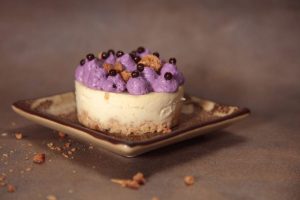Ready to give your gut some love while tickling your taste buds? Fermented foods aren’t just probiotic powerhouses—they’re packed with bold, tangy flavors that make every bite exciting. From crunchy kimchi to zesty homemade pickles, these 18 recipes are easy, delicious, and perfect for boosting digestion. Whether you’re a fermenting newbie or a kraut connoisseur, there’s something here to inspire your next kitchen adventure. Let’s get bubbling!
Classic Homemade Sauerkraut
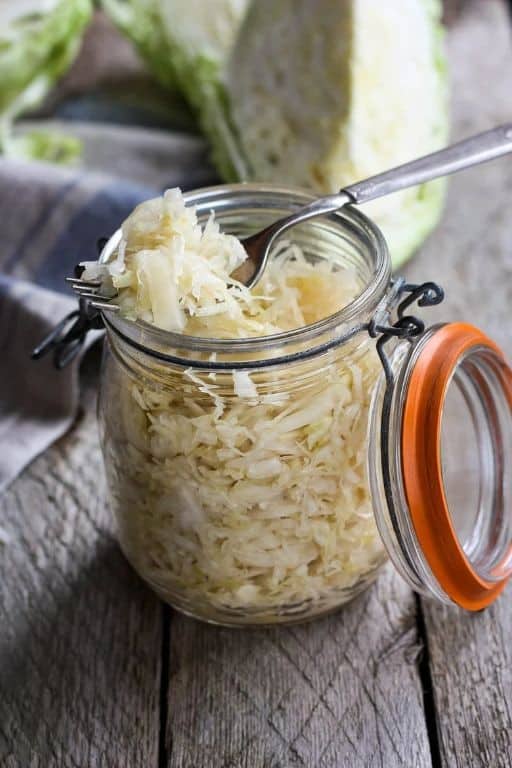
Fermenting your own sauerkraut is easier than you think—just cabbage, salt, and a little patience yield tangy, crunchy goodness!
Ingredients:
- 1 medium head green cabbage (about 2 lbs), thinly shredded
- 1 tbsp kosher salt
- 1 tsp caraway seeds (optional)
Instructions:
- In a large bowl, combine the shredded cabbage and 1 tbsp kosher salt. Massage firmly for 5–7 minutes until the cabbage releases liquid and wilts slightly.
- Mix in 1 tsp caraway seeds (if using), then pack the cabbage tightly into a clean quart-sized jar, pressing down to submerge it completely in its own brine. Leave 1 inch of headspace.
- Cover the jar loosely with a lid or cloth. Let ferment at room temperature (68–72°F) for 1–4 weeks, pressing the cabbage down daily to keep it submerged. Taste weekly until desired tanginess is reached.
- Once fermented, seal the jar and refrigerate for up to 6 months.
The magic here? No fancy starters—just salt and time transform humble cabbage into a probiotic-rich staple with a satisfying crunch.
Tip: Use a fermentation weight or small zip-top bag filled with water to keep the cabbage submerged if needed.
Spicy Kimchi with Napa Cabbage

If you love bold, tangy flavors, this homemade kimchi is a must-try—it’s packed with heat and crunch, perfect for topping rice bowls or eating straight from the jar!
Ingredients:
- 1 large head napa cabbage (about 2 lbs), cut into 2-inch pieces
- 1/4 cup coarse sea salt
- 1/4 cup gochugaru (Korean red pepper flakes)
- 3 tbsp fish sauce
- 2 tbsp sugar
- 5 cloves garlic, minced
- 1 tbsp grated ginger
- 4 green onions, sliced
- 1 small daikon radish, julienned
Instructions:
- In a large bowl, toss napa cabbage with 1/4 cup coarse sea salt. Let sit at room temperature for 2 hours, tossing every 30 minutes. Rinse thoroughly under cold water and drain.
- In a separate bowl, mix 1/4 cup gochugaru, 3 tbsp fish sauce, 2 tbsp sugar, minced garlic, and grated ginger to form a paste.
- Combine drained cabbage, green onions, and daikon radish with the paste, massaging until evenly coated.
- Pack tightly into a clean quart-sized jar, pressing down to remove air bubbles. Leave 1 inch of space at the top.
- Let ferment at room temperature for 2–3 days (burping the jar daily), then refrigerate. Enjoy within 3 weeks for peak flavor.
The magic of this kimchi? The longer it ferments, the deeper the tangy-spicy flavor gets—making it a versatile condiment that improves with time.
Tip: For extra crunch, add shredded carrots or sliced Korean pear to the mix!
Fermented Garlic Honey
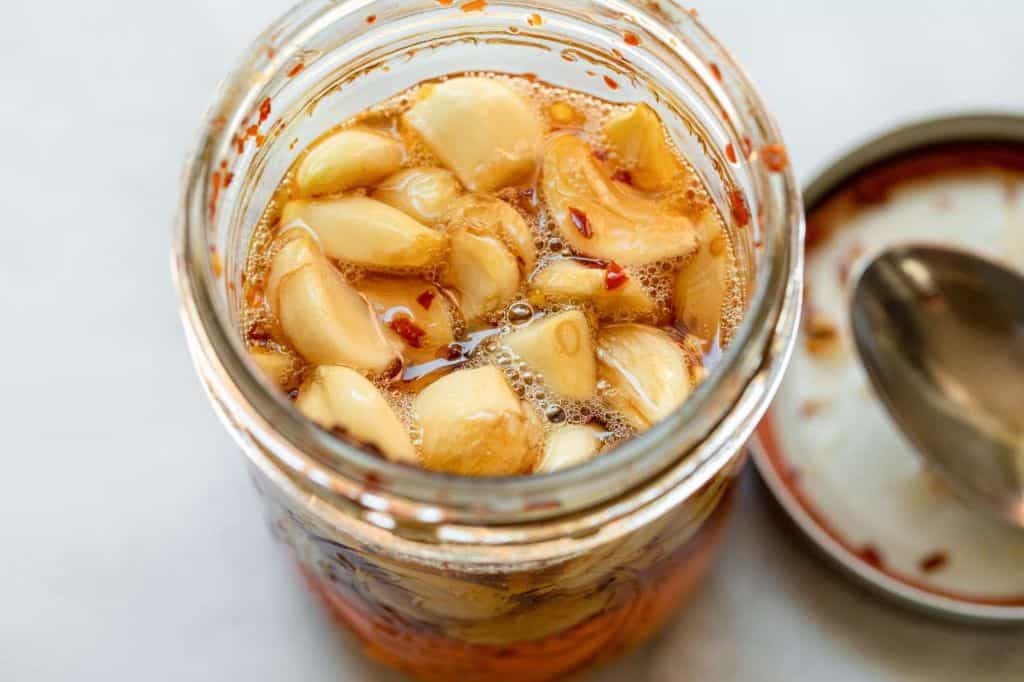
This sweet, tangy, and slightly spicy fermented garlic honey is a magical condiment that gets better with time—perfect for drizzling over pizza, stirring into dressings, or even sipping when you’re under the weather.
Ingredients:
- 1 cup raw honey (preferably local)
- 1/2 cup peeled garlic cloves (about 10–12 cloves)
- 1/2 tsp red pepper flakes (optional)
Instructions:
- Pack the garlic cloves and 1/2 tsp red pepper flakes (if using) into a clean 12-ounce glass jar.
- Pour 1 cup raw honey over the garlic, ensuring all cloves are fully submerged. Gently tap the jar to release air bubbles.
- Seal the jar loosely (to allow gas to escape) and store at room temperature away from direct sunlight. Flip the jar daily for the first week to redistribute the honey.
- Ferment for 3–4 weeks, burping the jar occasionally if pressure builds. The honey will thin and the garlic will mellow and darken.
The longer it sits, the deeper the flavor—the honey develops a rich, caramelized garlic essence with a subtle kick. Try it glazed on roasted carrots or stirred into a hot toddy!
Tip: If any garlic floats above the honey, just flip the jar daily to keep it coated and prevent mold.
Tangy Fermented Pickles
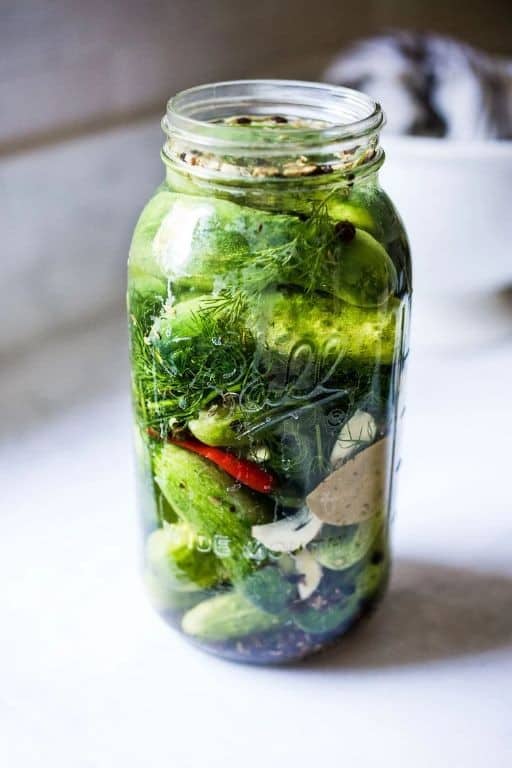
These crunchy, tangy pickles are a fermented delight—no fancy equipment needed, just patience and a love for bold flavors!
Ingredients:
- 2 lbs small pickling cucumbers (about 4-5 inches long)
- 4 cups filtered water
- 2 tbsp kosher salt
- 4 cloves garlic, smashed
- 1 tbsp black peppercorns
- 2 tsp dill seeds (or 2 fresh dill sprigs)
- 1 tsp red pepper flakes (optional)
Instructions:
- Wash the cucumbers thoroughly and trim off the blossom ends (this prevents softening).
- In a bowl, whisk together the filtered water and 2 tbsp kosher salt until fully dissolved to make the brine.
- Pack the cucumbers vertically into a clean 1-quart jar, adding the smashed garlic, 1 tbsp black peppercorns, 2 tsp dill seeds, and 1 tsp red pepper flakes as you layer them.
- Pour the brine over the cucumbers, leaving 1 inch of headspace. Weigh them down with a fermentation weight or small glass jar to keep them submerged.
- Cover the jar loosely with a lid or cloth and let ferment at room temperature (68-72°F) for 3-5 days. Bubbles will form—this is normal! Taste daily after day 3 until tanginess suits your preference.
- Once fermented, seal the jar and refrigerate. The pickles will keep for up to 2 months.
The magic here? The natural fermentation creates a complex sourness that store-bought pickles just can’t match. Plus, they stay crisp for weeks!
Tip: For extra crunch, add a grape leaf or oak leaf to the jar—their tannins help keep the pickles firm.
Probiotic Fermented Carrot Sticks

These tangy, crunchy carrot sticks are a gut-friendly snack that’s as easy to make as it is addictive—just let time do the work!
Ingredients:
- 1 lb carrots, cut into 3-inch sticks (about ¼-inch thick)
- 2 cups filtered water
- 1 tbsp sea salt
- 2 cloves garlic, smashed
- 1 tsp black peppercorns
- 1 bay leaf
Instructions:
- In a saucepan, combine the filtered water and sea salt. Heat over medium until the salt dissolves, then let cool to room temperature.
- Pack the carrot sticks vertically into a clean 16-oz mason jar, leaving 1 inch of space at the top. Tuck in the garlic, peppercorns, and bay leaf.
- Pour the cooled brine over the carrots, ensuring they’re fully submerged (use a fermentation weight or small glass jar to weigh them down if needed).
- Cover the jar with a loose lid or cloth secured with a rubber band. Let ferment at room temperature (68–75°F) for 5–7 days, burping the jar daily to release gases.
- Once bubbly and tangy to taste, transfer to the fridge. They’ll keep for up to 1 month.
The garlic and peppercorns add a subtle kick, while the slow fermentation gives these carrots a crisp-tender bite and probiotic punch. Tip: For extra flavor, add a pinch of red pepper flakes or fresh dill to the jar before fermenting!
Traditional Fermented Miso Paste
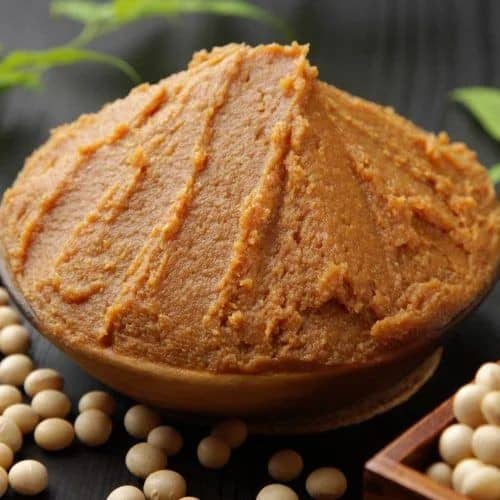
Making miso at home is easier than you think—just a little patience rewards you with deep, umami-rich flavor perfect for soups, marinades, and more!
Ingredients:
- 2 cups dried soybeans
- 1 cup koji rice (available at Japanese markets or online)
- 1/2 cup sea salt (non-iodized)
- 1/4 cup filtered water (plus extra for soaking)
Instructions:
- Soak the soybeans overnight in 4 cups of filtered water. Drain and rinse.
- Cook the soybeans in a pressure cooker for 45 minutes (or simmer for 3–4 hours) until mashably soft. Drain and cool to room temperature.
- In a large bowl, mash the soybeans into a chunky paste. Mix in the koji rice, 1/2 cup sea salt, and 1/4 cup filtered water until fully combined.
- Pack the mixture tightly into a sterilized glass jar, pressing to eliminate air pockets. Cover the surface with a layer of plastic wrap, then seal with a lid.
- Ferment in a cool, dark place (like a pantry) for at least 6 months, stirring occasionally to prevent mold. The miso will darken and develop complex flavor over time.
The magic of homemade miso? Its flavor evolves beautifully—try a spoonful after 6 months for a mild paste, or wait a year for bolder, funkier notes.
Tip: Label your jar with the date! Taste tests every few months help you track its progress.
Zesty Fermented Hot Sauce
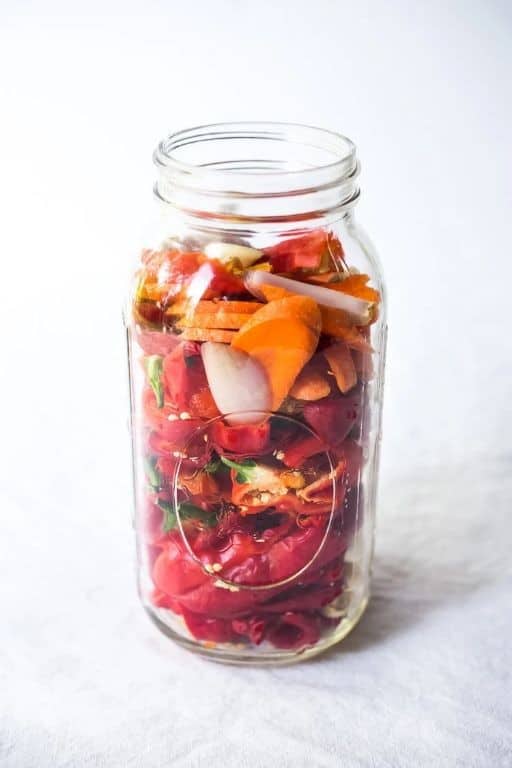
This tangy, fiery hot sauce gets its deep flavor from a quick fermentation—perfect for drizzling on tacos, eggs, or even pizza!
Ingredients:
- 1 lb mixed hot peppers (like jalapeño, serrano, or habanero), stems removed, roughly chopped
- 4 cloves garlic, peeled
- 1 tbsp kosher salt
- 1 tsp sugar
- 1 cup filtered water
- 1/2 cup white vinegar
- 1 tbsp lime juice
Instructions:
- In a blender, combine peppers, garlic, 1 tbsp kosher salt, and 1 tsp sugar. Pulse until finely chopped (not puréed).
- Transfer mixture to a clean quart-sized jar. Press down lightly, then pour in 1 cup filtered water until peppers are fully submerged (use a fermentation weight if needed).
- Cover jar with a loose lid or cloth secured with a rubber band. Let ferment at room temperature (68–75°F) for 5–7 days, burping the jar daily to release gas.
- Strain liquid into a bowl, reserving both solids and brine. Blend solids with 1/2 cup white vinegar, 1 tbsp lime juice, and 1/4 cup of the reserved brine until smooth.
- Pour sauce into a sterilized bottle and refrigerate. Flavor deepens over time—try it after a week!
The fermentation adds a funky, complex kick that store-bought sauces just can’t match. Plus, it keeps for months in the fridge!
Tip: Wear gloves when handling hot peppers to avoid skin irritation.
Crunchy Fermented Radishes
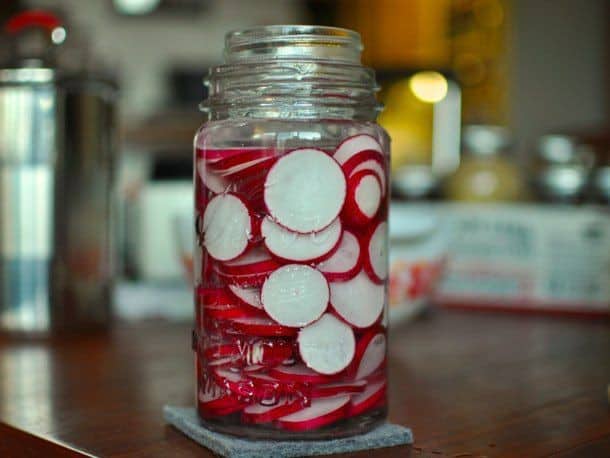
These tangy, crisp radishes add a punch of probiotic goodness to salads, tacos, or even charcuterie boards—plus, they’re shockingly easy to make at home!
Ingredients:
- 1 bunch radishes (about 10–12), thinly sliced
- 1 1/2 cups filtered water
- 1 tbsp kosher salt
- 1 tsp sugar
- 2 cloves garlic, smashed
- 1 tsp whole black peppercorns
- 1 small bay leaf
Instructions:
- In a small saucepan, combine 1 1/2 cups filtered water, 1 tbsp kosher salt, and 1 tsp sugar. Heat over medium, stirring just until salt and sugar dissolve. Let cool to room temperature.
- Pack the radishes into a clean 16-oz jar along with 2 cloves smashed garlic, 1 tsp black peppercorns, and 1 small bay leaf.
- Pour the cooled brine over the radishes, leaving 1 inch of headspace. Seal the jar loosely (to allow gas to escape).
- Ferment at room temperature for 3–5 days, burping the jar daily. Taste after day 3—they’re ready when pleasantly sour but still crunchy.
- Transfer to the fridge to slow fermentation. They’ll keep for up to 1 month.
The magic here? The radishes stay crazy-crisp while developing a bright, peppery tang—no fancy equipment required!
Tip: For extra flavor, toss in a pinch of red pepper flakes or fresh dill with the garlic.
Fermented Beet Kvass
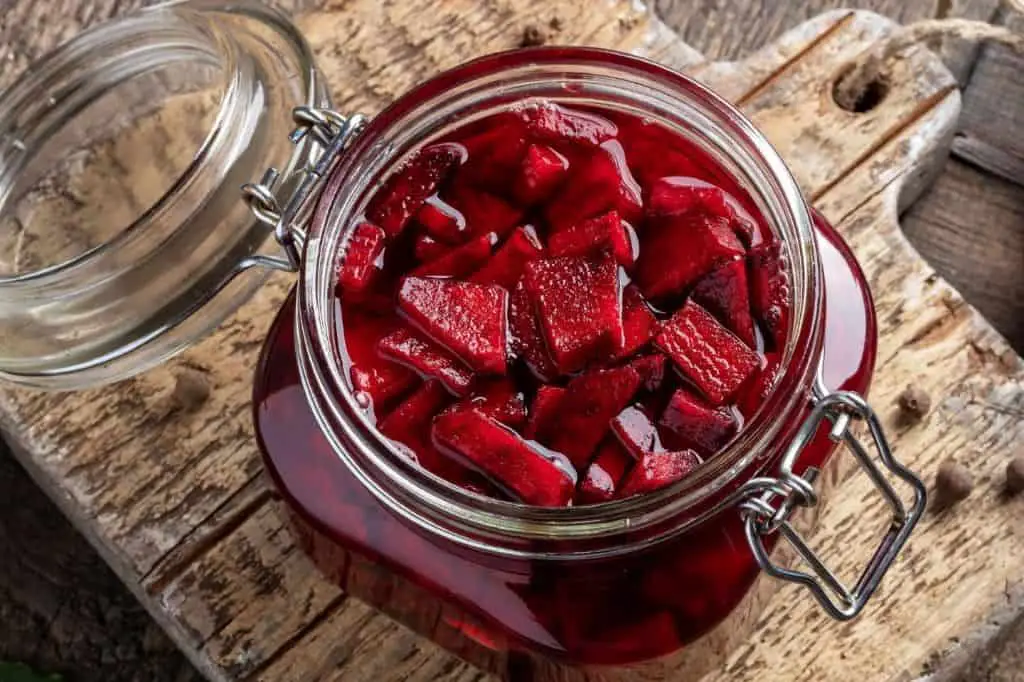
This vibrant, probiotic-rich beet kvass is a gut-loving tonic with earthy sweetness and a refreshing tang—perfect for sipping straight or adding to dressings.
Ingredients:
- 2 medium organic beets (about 1 lb), scrubbed and chopped into 1-inch cubes (no need to peel)
- 3 ½ cups filtered water
- 1 ½ tsp fine sea salt
- 1 tbsp raw honey or maple syrup
- 2 tbsp fresh lemon juice
Instructions:
- In a clean 1-quart glass jar, combine the beets, 3 ½ cups filtered water, 1 ½ tsp sea salt, and 1 tbsp honey or maple syrup. Stir until the salt dissolves.
- Cover the jar with a fermentation lid (or cheesecloth secured with a rubber band) to allow airflow while keeping out debris. Let sit at room temperature (68–75°F) for 3–5 days, stirring once daily with a clean spoon.
- After 3 days, taste the kvass. It should be mildly effervescent with a balanced tang. If you prefer a stronger ferment, let it go up to 5 days.
- Strain out the beets (save them for salads or compost!), stir in 2 tbsp lemon juice, and transfer the liquid to a sealed bottle. Refrigerate for up to 2 weeks.
The magic of this kvass? Its deep ruby hue and naturally fizzy kick make it feel like a wellness elixir—but it’s just beets, time, and a little patience.
Tip: For extra depth, add a few slices of fresh ginger or a garlic clove to the jar before fermenting.
Homemade Fermented Yogurt
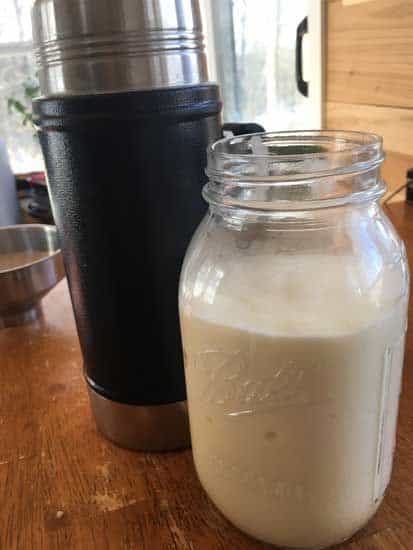
Skip the store-bought tubs—this creamy, tangy yogurt is surprisingly simple to make with just two ingredients and a little patience.
Ingredients:
- 4 cups whole milk (not ultra-pasteurized)
- 2 tbsp plain yogurt with live cultures (or a yogurt starter packet)
Instructions:
- Heat the milk in a heavy-bottomed pot over medium heat until it reaches 180°F, stirring occasionally to prevent scorching. Use a thermometer—this step kills unwanted bacteria.
- Cool the milk to 110°F (about 30–45 minutes). To speed this up, place the pot in an ice bath, stirring gently.
- Whisk in the 2 tbsp plain yogurt until fully dissolved. Pour into a clean glass jar, cover with a lid or cheesecloth, and place in a warm spot (like an oven with the light on or a yogurt maker) for 6–12 hours. The longer it ferments, the tangier it gets!
- Chill for at least 4 hours to thicken before enjoying. Stir if separation occurs.
The magic here? No fancy equipment—just time and warmth transform milk into velvety yogurt with a fresher, brighter flavor than anything from the dairy aisle.
Tip: Save 2 tbsp of your homemade batch to culture the next one!
Fermented Chili Garlic Sauce
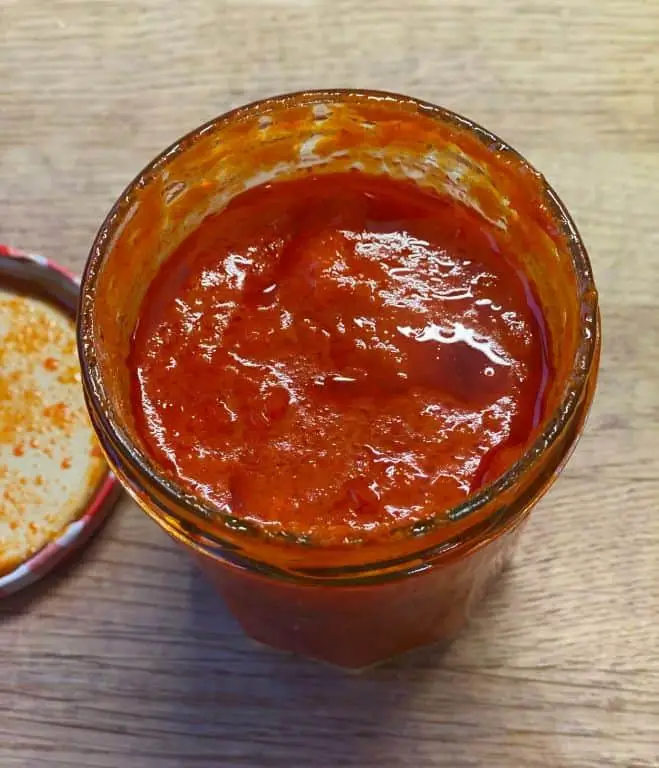
This fiery, umami-packed sauce is a game-changer for stir-fries, marinades, or even drizzling over avocado toast—just a spoonful wakes up any dish!
Ingredients:
- 1 lb fresh red chili peppers (like Fresno or Thai), stems removed
- 1 head garlic (about 10 cloves), peeled
- 2 tbsp kosher salt
- 1 tbsp granulated sugar
- 1/2 cup filtered water
- 1 tbsp rice vinegar
Instructions:
- In a food processor, pulse the chili peppers and garlic until finely chopped (not puréed).
- Transfer to a clean glass jar. Add 2 tbsp kosher salt and 1 tbsp sugar, massaging with clean hands until the mixture releases liquid, about 2 minutes.
- Press down firmly to submerge the mixture in its own juices. Pour in 1/2 cup filtered water if needed to cover.
- Seal with an airlock lid or loosely cover with a clean cloth. Ferment at room temperature (68–75°F) for 7 days, stirring daily with a sterilized spoon.
- After fermentation, stir in 1 tbsp rice vinegar. Blend until smooth for a pourable sauce or leave chunky for texture.
The magic here? Fermentation deepens the chilies’ fruity heat and mellows the garlic into a savory-sweet punch—no store-bought version compares!
Tip: For a fun twist, add 1/2 tsp smoked paprika with the salt for a subtle campfire kick.
Sourdough Fermented Bread Starter
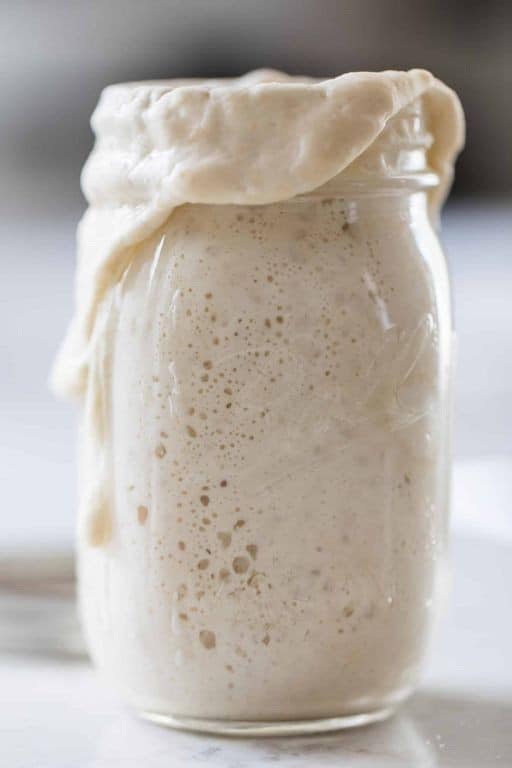
There’s nothing quite like the tangy, complex flavor of homemade sourdough—and it all starts with a bubbly, active starter. Here’s how to cultivate your own from scratch!
Ingredients:
- 1 cup (120g) whole wheat flour
- 1 cup (120g) all-purpose flour
- 1 cup (240ml) lukewarm water (about 75°F)
Instructions:
- Day 1: In a clean glass jar, mix 1 cup (120g) whole wheat flour and 1/2 cup (120ml) lukewarm water until smooth. Cover loosely with a lid or cloth and let sit at room temperature (70–75°F) for 24 hours.
- Day 2: Discard half the starter. Add 1 cup (120g) all-purpose flour and 1/2 cup (120ml) lukewarm water, stirring until combined. Re-cover and rest another 24 hours.
- Days 3–7: Repeat the Day 2 process daily. By Day 5, your starter should smell pleasantly tangy and bubble vigorously within 4–6 hours of feeding—that’s when it’s ready to bake with!
The magic of this starter lies in its wild yeast, which develops a deeper flavor over time. Once active, it’ll keep indefinitely with regular feedings—like a low-maintenance pet that bakes bread!
Tip: If your kitchen is chilly, place the jar on top of the fridge or near a warm appliance to speed up fermentation.
Fermented Ginger Lemon Tonic

This bubbly, probiotic-rich tonic is like sunshine in a jar—bright, zesty, and packed with gut-loving goodness.
Ingredients:
- 1 cup filtered water (room temperature)
- 1/4 cup fresh lemon juice (about 2 lemons)
- 2 tbsp grated ginger (packed)
- 2 tbsp raw honey or maple syrup
- 1/4 tsp sea salt
Instructions:
- In a clean 16-oz glass jar, combine the filtered water, lemon juice, grated ginger, honey, and sea salt. Stir well until the honey dissolves.
- Cover the jar with a fermentation lid (or a coffee filter secured with a rubber band) to allow airflow. Let sit at room temperature for 24–48 hours, stirring once daily. Tiny bubbles will form when ready.
- Strain the tonic through a fine-mesh sieve into a bottle, pressing the ginger to extract all the liquid. Chill for at least 2 hours before serving over ice.
The magic here? The natural fermentation creates a lightly effervescent drink with a tangy-sweet kick—perfect for sipping after a workout or as a midday pick-me-up.
Tip: For extra fizz, let it ferment an extra 12 hours (but burp the bottle daily to avoid pressure buildup!).
Fermented Green Tomato Relish
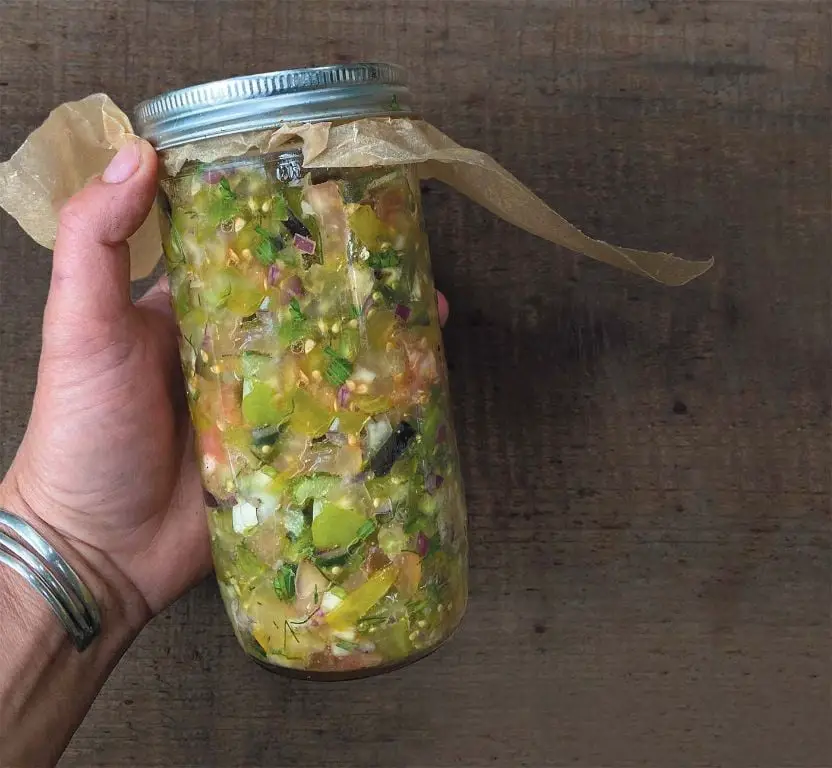
Tangy, slightly funky, and packed with crunch, this fermented green tomato relish is the secret weapon your sandwiches and grilled meats have been missing.
Ingredients
- 2 lbs firm green tomatoes, cored and diced into 1/4-inch pieces
- 1 medium yellow onion, finely diced
- 1/2 cup apple cider vinegar
- 1/4 cup granulated sugar
- 2 tbsp kosher salt
- 1 tbsp mustard seeds
- 1 tsp celery seeds
- 1/2 tsp red pepper flakes
Instructions
- In a large bowl, combine green tomatoes, onion, apple cider vinegar, sugar, kosher salt, mustard seeds, celery seeds, and red pepper flakes. Stir well to dissolve the sugar and salt.
- Pack the mixture tightly into a clean quart-sized mason jar, pressing down to release juices and leaving 1 inch of headspace. Cover with a fermentation lid or a loosely fitted regular lid.
- Let ferment at room temperature (68–72°F) for 3–5 days, burping the jar daily to release gases. Taste after day 3—it should be tangy with a slight effervescence.
- Once fermented to your liking, screw on a tight lid and refrigerate for up to 3 months. The flavors will mellow over time.
The relish develops a crave-worthy balance of sour, sweet, and umami, with the tomatoes retaining a satisfying crunch even after fermentation.
Tip: For extra depth, add a smashed garlic clove or a sprig of fresh dill to the jar before fermenting.
Fermented Coconut Yogurt
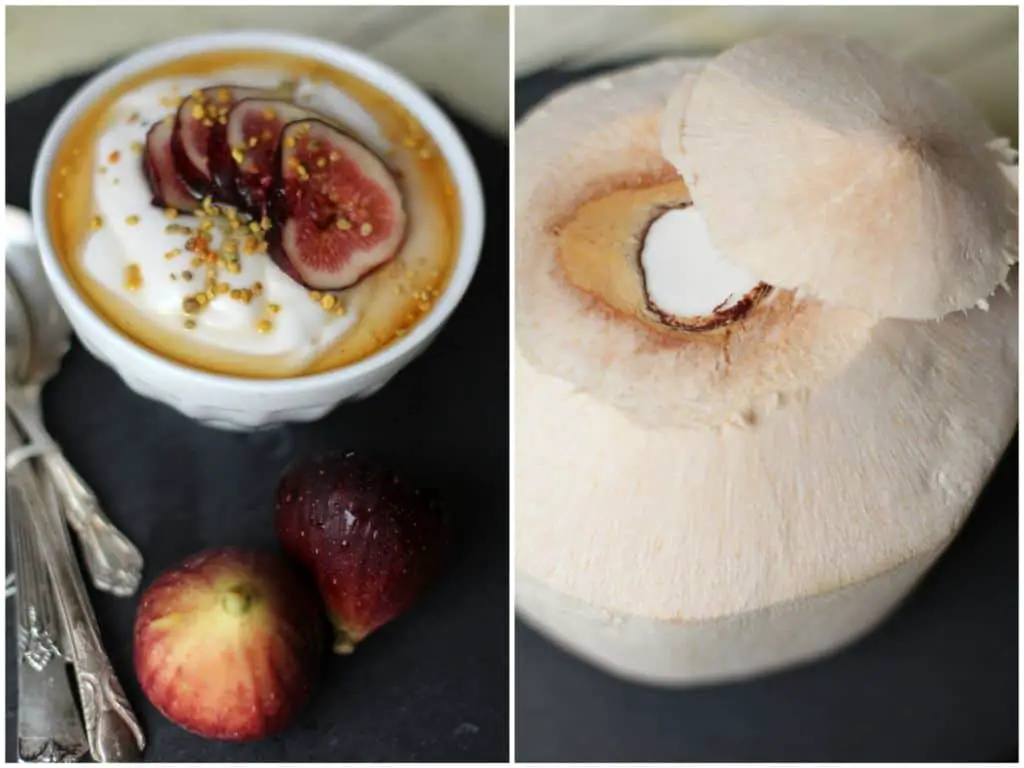
This creamy, tangy coconut yogurt is a dairy-free dream—easy to make at home with just a few simple ingredients and a little patience.
Ingredients:
- 2 (13.5 oz) cans full-fat coconut milk
- 2 probiotic capsules (or 1/4 cup store-bought plain coconut yogurt as starter)
- 1 tbsp pure maple syrup (optional, for slight sweetness)
- 1/2 tsp vanilla extract (optional)
Instructions:
- Pour the coconut milk into a small saucepan and warm over low heat until just lukewarm (about 100°F), stirring occasionally. Remove from heat.
- Open the probiotic capsules and stir the powder into the coconut milk (or mix in the store-bought yogurt starter). Add the maple syrup and vanilla extract, if using.
- Transfer the mixture to a clean glass jar, cover with a breathable cloth secured with a rubber band, and let ferment in a warm spot (70–80°F) for 12–24 hours. The longer it sits, the tangier it gets!
- Once thickened to your liking, screw on a lid and refrigerate for at least 4 hours to chill and set further. It will thicken more as it cools.
The magic of fermentation gives this yogurt a delightfully creamy texture and subtle tartness—no dairy required! Swirl in fresh fruit or granola for a probiotic-packed breakfast.
Tip: For extra-thick yogurt, strain it through cheesecloth for 1–2 hours after fermenting.
Fermented Turmeric Ginger Paste
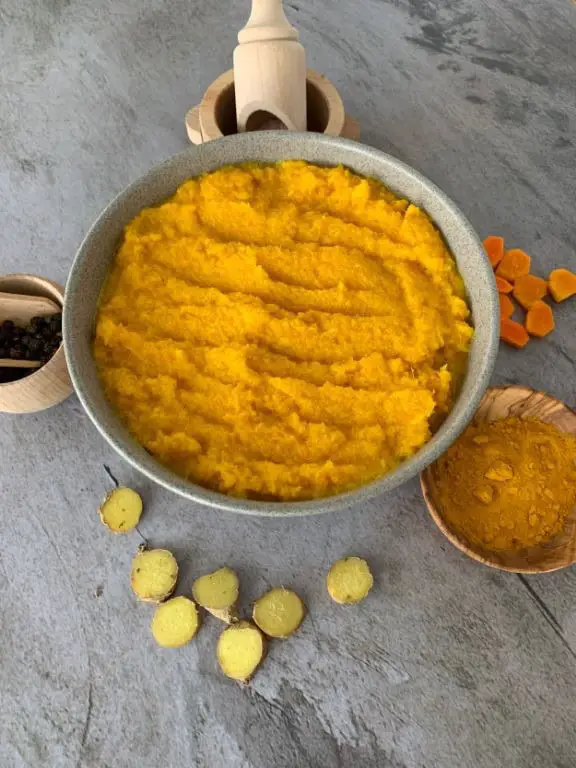
This vibrant, probiotic-rich paste adds a punch of flavor and gut-friendly benefits to dressings, marinades, or even a spoonful of warm water for a wellness boost.
Ingredients
- 1 cup peeled and roughly chopped fresh turmeric root
- 1 cup peeled and roughly chopped fresh ginger
- 4 garlic cloves, peeled
- 1 tbsp fine sea salt
- 1 tbsp raw honey or maple syrup
- 1/4 cup filtered water (plus extra if needed)
Instructions
- In a food processor, combine turmeric, ginger, and garlic. Pulse until finely minced, scraping down the sides as needed.
- Add 1 tbsp sea salt and 1 tbsp honey (or maple syrup), then pulse again to incorporate. The mixture should resemble a coarse paste.
- Transfer to a clean 16-oz glass jar, pressing down firmly to remove air pockets. Pour 1/4 cup filtered water over the top—just enough to submerge the paste (add more if needed).
- Cover with a fermentation lid or a clean cloth secured with a rubber band. Let sit at room temperature (68–75°F) for 3–5 days, stirring once daily. It’s ready when bubbly and slightly tangy.
- Seal with a tight lid and store in the fridge for up to 3 months.
The fermentation deepens the earthy warmth of turmeric and ginger while mellowing their sharpness—perfect for stirring into coconut milk-based curries or drizzling over roasted veggies.
Tip: Wear gloves when handling turmeric to avoid staining your hands!
Fermented Apple Cider Vinegar
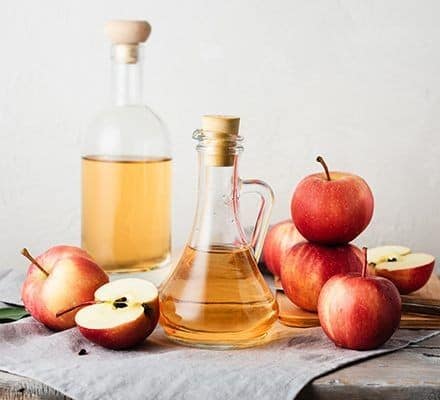
Skip the store-bought stuff—this tangy, probiotic-rich vinegar is surprisingly simple to make with just apples, sugar, and patience.
Ingredients:
- 4 medium organic apples (any variety), cored and roughly chopped
- 1/4 cup granulated sugar
- 4 cups filtered water, room temperature
- 1 tbsp raw honey or unpasteurized vinegar (optional, for starter)
Instructions:
- Ferment the apples: Combine chopped apples, 1/4 cup sugar, and filtered water in a clean 1-quart glass jar. Stir until sugar dissolves. Cover with a cheesecloth and rubber band.
- Let it bubble: Store at room temperature (70–75°F) for 2 weeks, stirring daily with a wooden spoon. After 14 days, strain out solids using a fine-mesh sieve.
- Second ferment: Return liquid to the jar, stir in 1 tbsp honey or vinegar (if using), and re-cover with cheesecloth. Ferment for 3–4 more weeks until tangy and slightly cloudy.
- Store: Transfer to a bottle, leaving 1 inch of headspace. Refrigerate for up to 6 months.
The magic? A double fermentation gives this vinegar a deeper, fruitier flavor than commercial versions—perfect for dressings or gut-health shots.
Tip: Use a hydrometer to check readiness (it should read below 1.000 SG) or taste for sharp acidity.
Fermented Red Onion Pickles
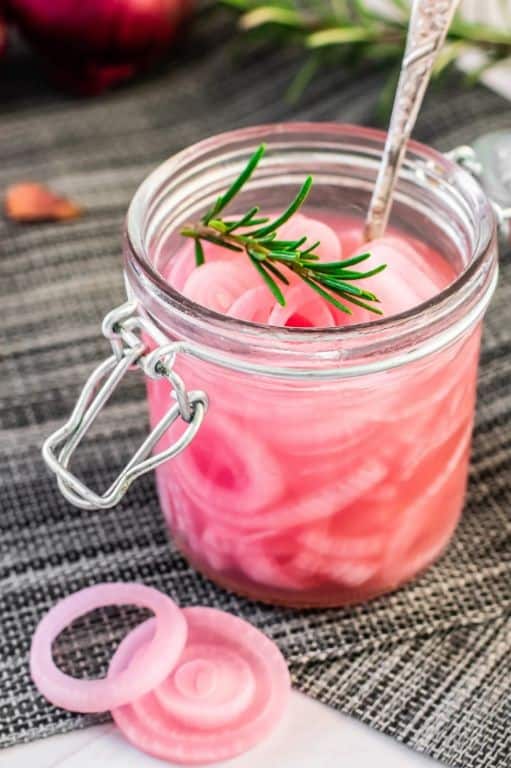
These tangy, crisp pickled onions add a punch of flavor to tacos, salads, and sandwiches—plus, they’re surprisingly simple to make with just a few ingredients!
Ingredients:
- 2 medium red onions, thinly sliced
- 1 1/2 cups filtered water
- 1 tbsp kosher salt
- 1 tbsp sugar
- 1 tsp whole black peppercorns
- 2 bay leaves
Instructions:
- Pack the sliced red onions into a clean 16-oz mason jar, leaving 1 inch of space at the top.
- In a small saucepan, combine the filtered water, 1 tbsp kosher salt, and 1 tbsp sugar. Heat over medium, stirring until dissolved (about 2 minutes). Let cool to room temperature.
- Pour the brine over the onions, ensuring they’re fully submerged. Add 1 tsp black peppercorns and 2 bay leaves to the jar.
- Seal the jar loosely (or cover with a fermentation lid) and let sit at room temperature for 3–5 days, burping the jar daily. Onions will turn bright pink and develop a tangy flavor.
- Once fermented to your liking, refrigerate for up to 3 weeks.
The fermentation process gives these onions a delightful fizz and deepens their natural sweetness—perfect for balancing rich dishes like pulled pork or avocado toast.
Tip: For extra crunch, soak the sliced onions in ice water for 10 minutes before packing the jar.
Conclusion
There you have it—18 tangy, gut-friendly fermented recipes to boost your health and delight your taste buds! Whether you’re a fermenting newbie or a seasoned pro, there’s something here for everyone. Give these recipes a try, then let us know which ones you loved in the comments below. Don’t forget to share this roundup on Pinterest so others can join in on the fermentation fun. Happy fermenting!

I’m Brandon, the face behind the recipes. As a dedicated food enthusiast, I love experimenting with flavors and sharing my culinary adventures with you.
